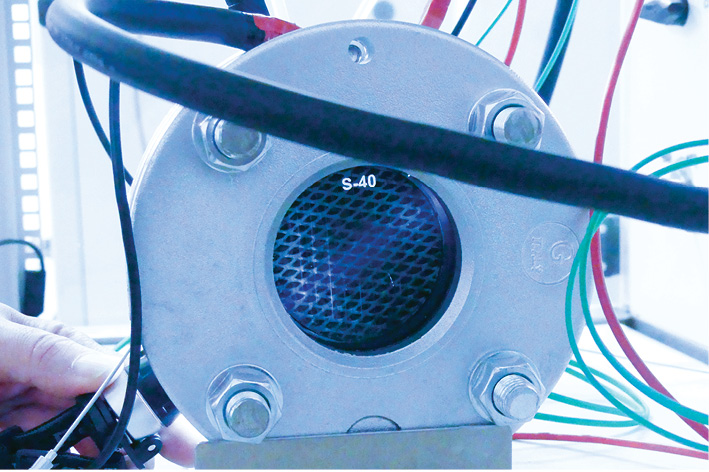SYSPACREVERS
The SysPàCRever project (Innovations and proof of concept for the conversion and production of stored solar electric energy via the hydrogen vector: Reversible Fuel Cell System) proposes the design, optimization and real-time testing of a new 3-chamber reversible PàC concept that can perform electrolyzer or fuel cell functions.
The Reunion Island region is no exception to the energy problem. As an island region, it is characterized by a situation of high energy dependence. Even if the use of local and renewable energy resources is higher than that used in metropolitan France, it is nevertheless insufficient in relation to the objectives set in terms of energy autonomy.
As the share of renewable energies is to be increased in the coming years, the question of their storage appears to be a key factor, essential to this development. Indeed, the production of renewable electricity, whatever its source: hydropower, wind power, solar power, has to varying degrees the major disadvantage of its intermittency.
The question then becomes: how to store the electricity produced during production peaks in order to consume it during consumption peaks?
One of the solutions currently recommended is to store energy via an electrolyser, which converts electricity into hydrogen and oxygen during low consumption hours. This energy is then returned via a fuel cell, which converts hydrogen and oxygen back into electricity on the grid during high consumption hours.
The SysPàCRever project aims to design and optimize the electro-fluidic performance of a new reversible PàC-R concept that converts electrical energy into hydrogen and oxygen (electrolyzer mode) and converts hydrogen into electrical energy (fuel cell mode).
The SysPacRevers project will be carried out in 2 phases and 4 steps composed of 2 actions each.
Step 1 : Modeling and installation of an experimental equipment
-
Action 1: Dimensioning and installation of a test bench for PàC-R
- Implementation of a specific experimental system for characterizing the performance of PàC-R. This experimental device will be fully automated, including diagnosis, data logging, settings, alarm and security functions.
-
Action 2 : Semi-transparent PàC-R cell designs
- For the understanding and characterization of PàC-R, Physico-chemical phenomena multiphysical and multi-scale modelling under the COMSOL Multiphysics software environment.
- Design of functional PàC-R cells guided by modelling performed in the COMSOL Multiphysics environment.
Step 2 : Assembling and instrumentation
-
Action 1: PàC-R assembly
- Optimization of tightening, tightness and preliminary tests of electrical performances.
-
Action 2: Semi-transparent PàC-R cells Instrumentation
- Fast camera imaging system Implementation
- Image acquisition and processing system Implementation
Step 3 : PàC-R Experiments
-
Action 1: Real-time testing of a PàC-R in electrolyser mode.
- The influence of sunlight and PàC-R operating parameters study
-
Action 2: Real-time test of the PàC-R in PàC mode
- Study of the influence of the operating parameters of PàC-R in humid tropical environments
Step 4 : PàC-R Optimization
-
Action 1: PàC-R demonstrator optimal design Conception
- Exchanges Modelisation and Exchange surfaces optimization
-
Action 2: Optimized PàC-R Demonstrator Assembly and tests
- Optimization of tightening, tightness and preliminary tests of the electrical performance of the optimized demonstrator.
Partnerships with academics
Laboratoire LEPMI
Partnerships with Local stakeholders
Temergie
This project valorization will be mainly addressed to the General Public.
Scientific Staff
Scientific Supervisors :
- Brigitte GRONDIN PEREZ
- Jean-Jacques KADJO
Project staff
Project manager : Loïc Deva HERMETTE
Scientific Managers :
Brigitte GRONDIN PEREZ (brigitte.grondin@univ-reunion.fr)
Jean-Jacques KADJO (akadjo@univ-reunion.fr)
Project Manager:
Loïc Deva HERMETTE (loic-deva.hermette@univ-reunion.fr)



